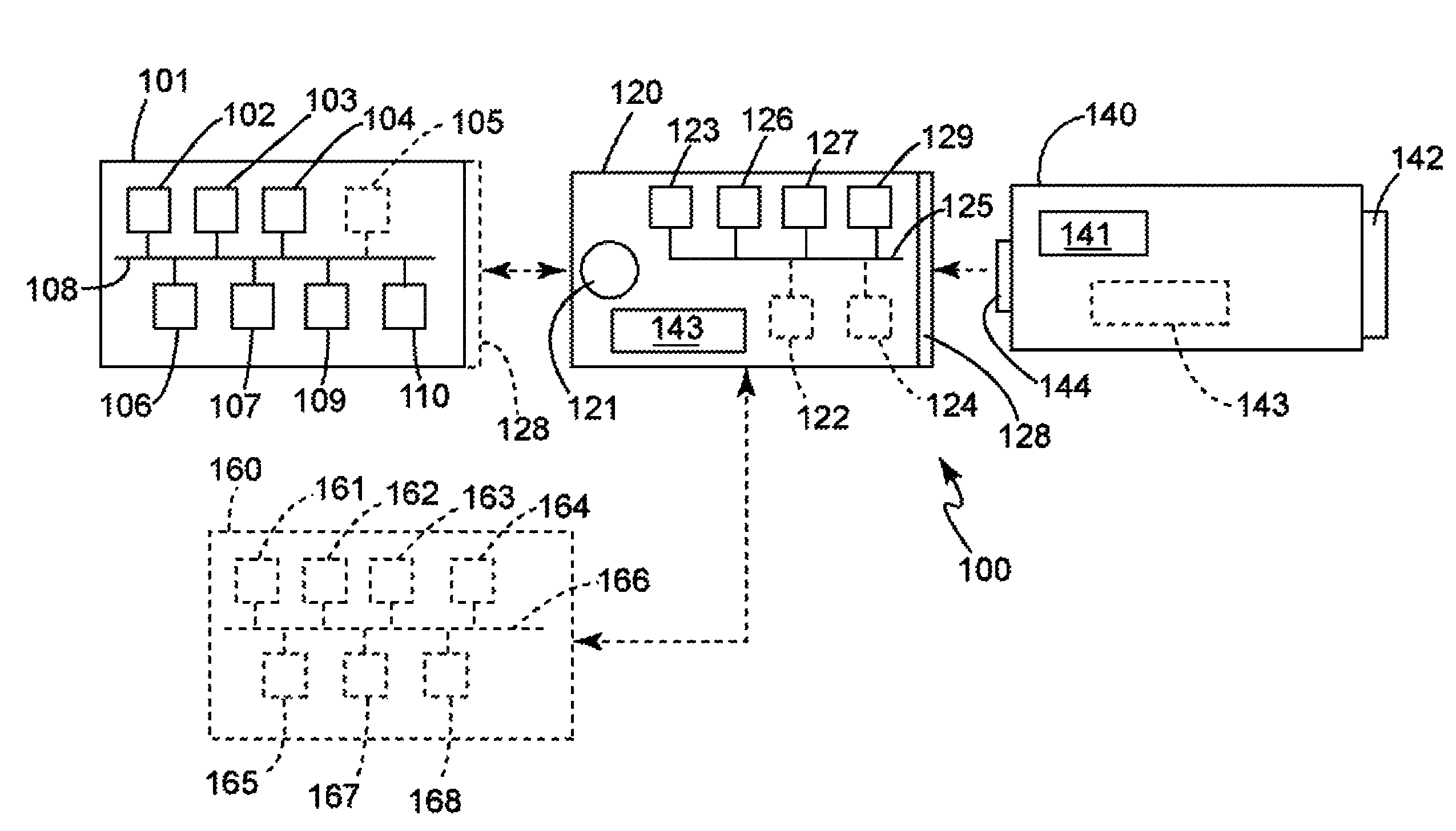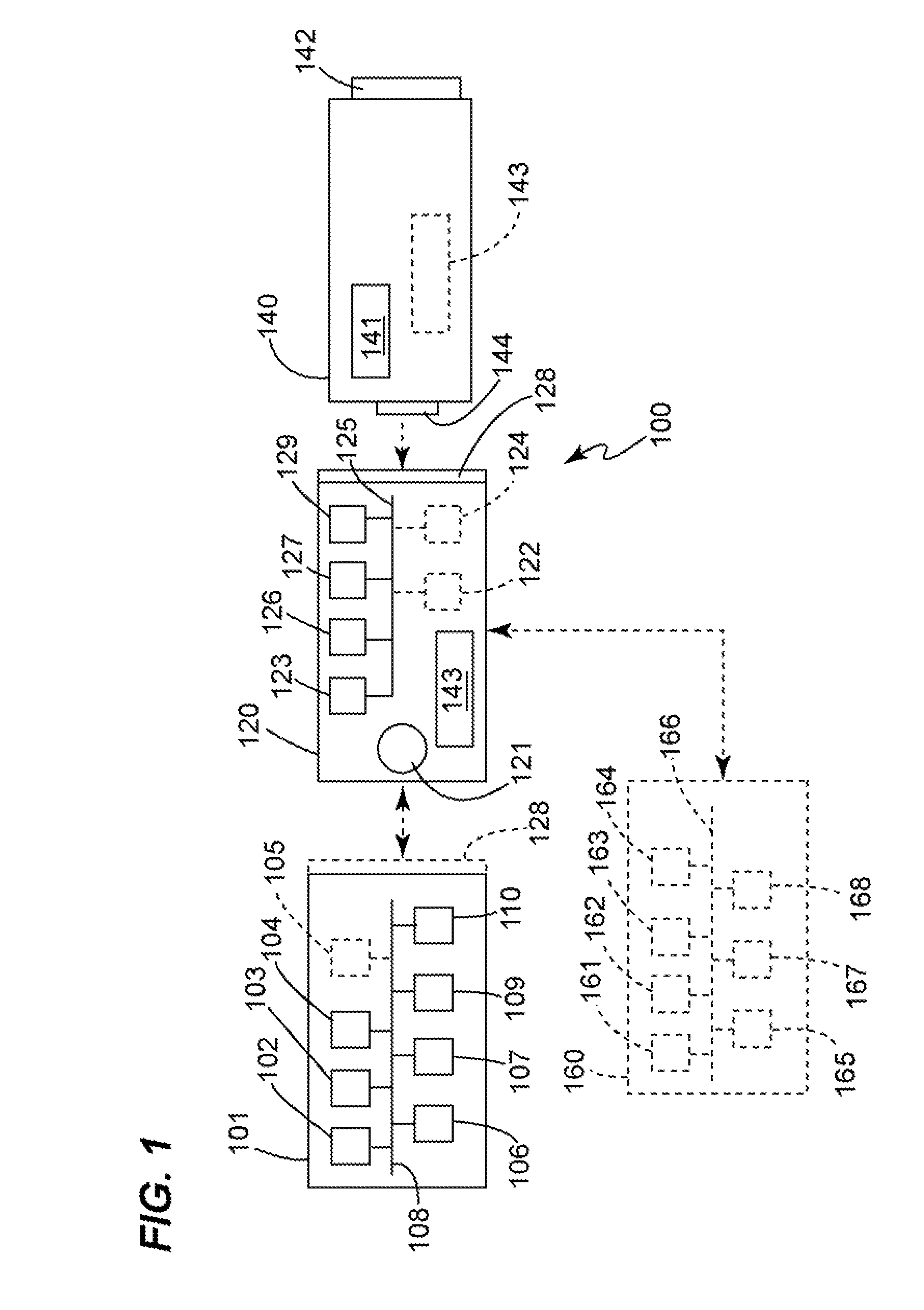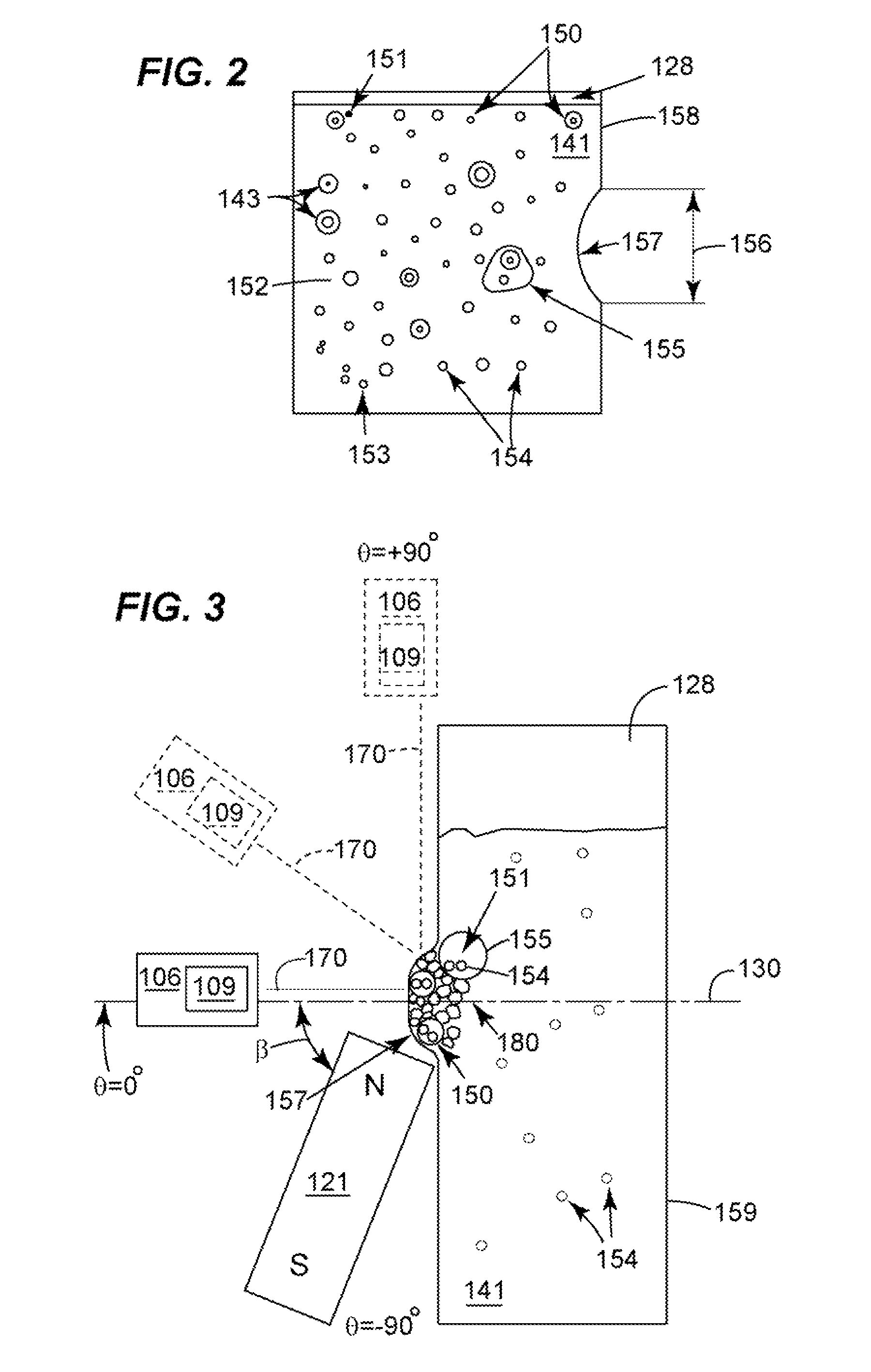System and method for improved biodetection
a biodetection and system technology, applied in the field of detection systems, can solve the problems of not being able to optimize for the use of portable substance detection systems, and known apparatus and methods are not configured, so as to increase detection sensitivity, accelerate binding reaction, and maximize the surface area of the pellet
- Summary
- Abstract
- Description
- Claims
- Application Information
AI Technical Summary
Benefits of technology
Problems solved by technology
Method used
Image
Examples
Embodiment Construction
[0050]As used herein, the term “detection target” refers to any substance (e.g., chemical elements and their compounds), microorganism, or molecule of interest that a substance identification system, equipped with any type of Raman spectrometer, may be configured to analyze and identify. The terms “Raman spectrometer” and “spectrometer” broadly refer to any type of fluorescence, phosphorescence, calorimetric, Surface-Enhanced Raman Spectroscopy (“SERS”) and other tags, as well as the instruments required to read the tags. Examples of instruments required to read the tags include, but are not limited to, a laser source, a laser detector, a laser controller, any necessary optics, circuitry, computer software, computer hardware, computer firmware, power source, magnet, and the like required to generate a laser-stimulated emission from a detection target bound to a magnetic particle or to a tag.
[0051]A “detection target” may include, but is not limited to, a pathogen, a toxin, a simulan...
PUM
 Login to View More
Login to View More Abstract
Description
Claims
Application Information
 Login to View More
Login to View More - R&D
- Intellectual Property
- Life Sciences
- Materials
- Tech Scout
- Unparalleled Data Quality
- Higher Quality Content
- 60% Fewer Hallucinations
Browse by: Latest US Patents, China's latest patents, Technical Efficacy Thesaurus, Application Domain, Technology Topic, Popular Technical Reports.
© 2025 PatSnap. All rights reserved.Legal|Privacy policy|Modern Slavery Act Transparency Statement|Sitemap|About US| Contact US: help@patsnap.com



